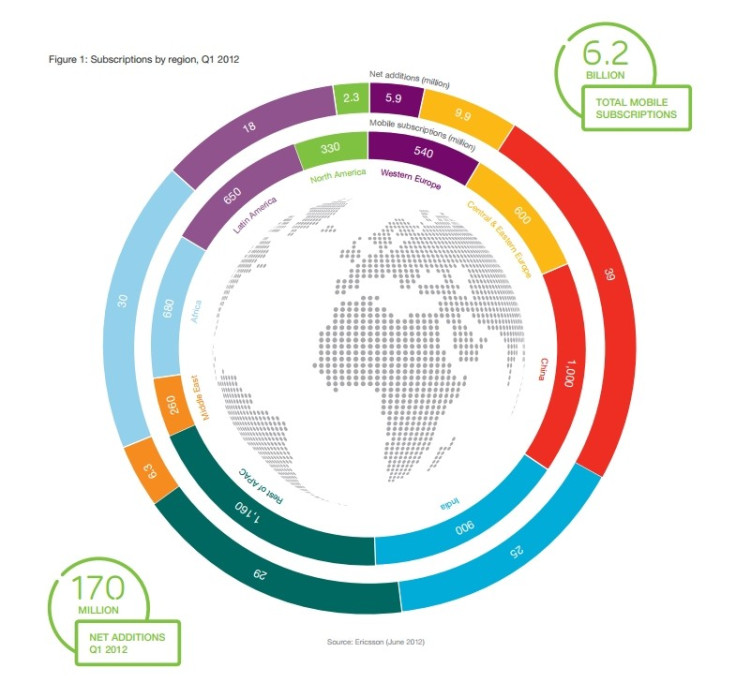High-Speed Mobile Internet Access: 85% of World Population Covered by 2017
Nine billion mobile subscriptions worldwide by 2017
High-speed mobile internet services will cover 85 percent of the world's population by 2017, according to an industry report.

The 3G networks will be the only means of accessing the internet for many people around the world, figures from Ericsson's Traffic and Market Report suggest.
In comparison, half of the world's population is predicted to be covered by LTE/4G networks by 2017.
"Today, around 75 percent of the HSPA networks worldwide have been upgraded to a peak speed of 7.2 Mbps or above and around 40 percent have been upgraded to 21 Mbps," said Douglas Gilstrap, senior vice president and head of strategy at Ericsson.
The Ericsson report, titled On the Pulse of the Networked Society, also predicted that there will be close to nine billion mobile subscriptions in five years' time, compared to 6.2 billion by the end of 2011.
However, the actual number of subscribers is currently around 4.2 billion, since many people have several subscriptions.
Mobile broadband subscriptions, meanwhile, are forecast to reach five billion in 2017, compared to one billion by the end of 2011.
Smartphone subscriptions will number around three billion in 2017, compared to 700 million in 2011.
Global data traffic doubled year-on-year from the start of 2011 to the same period in 2012.
Ericsson said the prime driver for that increase is video and the use of smartphones, predicting that mobile data traffic will grow by 15 times between 2011 and 2017.
Research showed that China has the fastest growing market of any single country, adding 39 million subscriptions in Q1 2012. India followed closest behind with 25 million.
The main trend identified in the report is that everything is going mobile.
"This evolution is mainly being driven by people's increasing demand for anywhere, anytime connectivity and the use of video, cloud-based services and the internet - but also by machine-to-machine connectivity," said a spokesman for Ericsson.
Machine-to-machine refers to systems that communicate with other devices, for example a fridge that contacts your supermarket to order more milk when it is running low.
Ericsson used measurements from its large base of live mobile networks around the world to collate the report.
More than 40 percent of the world's mobile traffic travels across Ericsson networks.
© Copyright IBTimes 2025. All rights reserved.





















